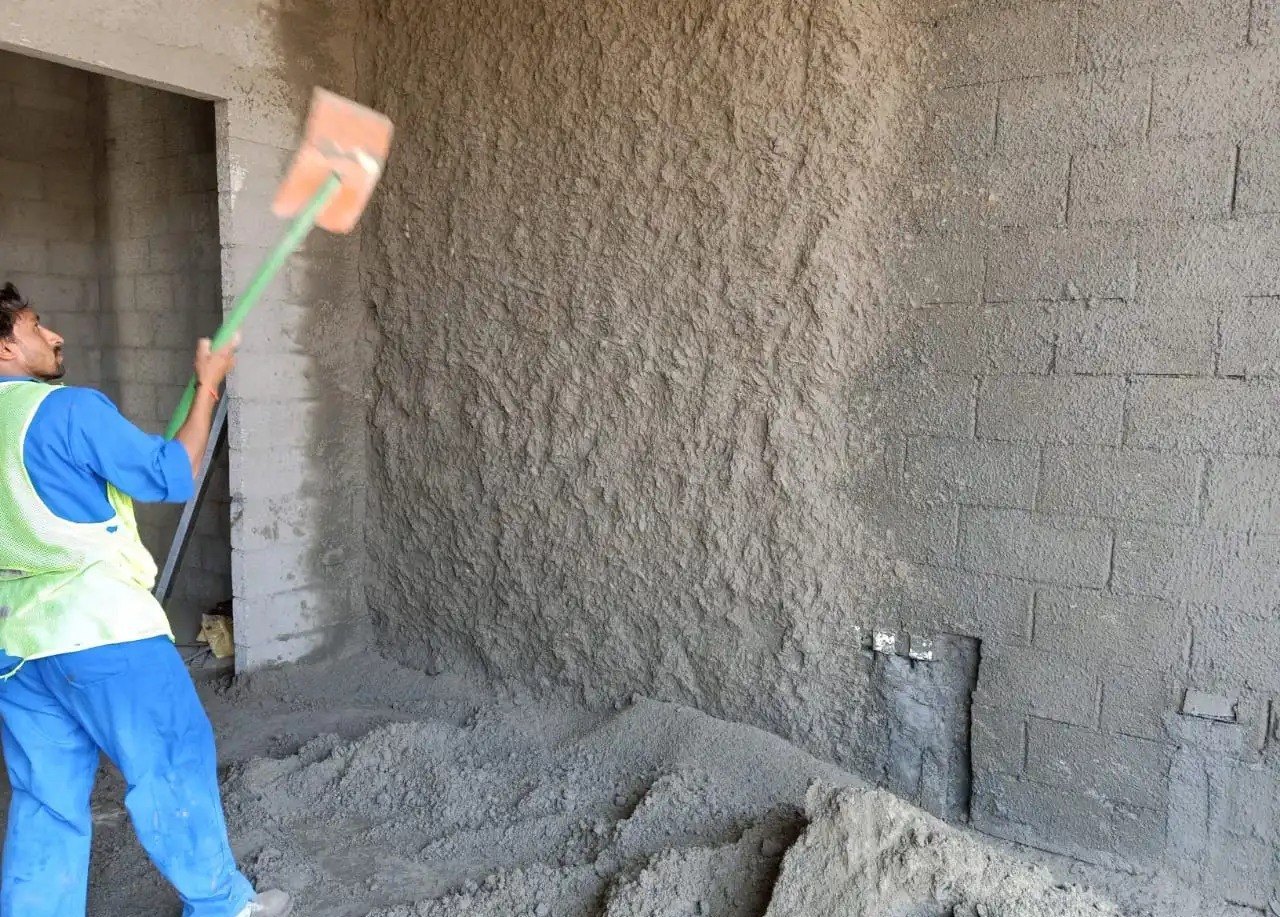Internal Plastering When it involves home construction and preservation, one of the most essential steps is the finishing paintings that offers your partitions a clean, polished, and aesthetically beautiful appearance. Internal plastering is a key part of this technique, gambling a critical function in both the structural integrity and visual appeal of your interiors. Whether you’re building a brand new domestic or renovating an old one, know-how the significance of inner plastering let you acquire the high-quality consequences.
In this article, we will explore what inner plastering is, why it’s essential, the varieties of plastering techniques to be had, and how you may maintain it to make certain lengthy-lasting outcomes Internal Plastering.
What is Internal Plastering?
Internal plastering refers back to the manner of making use of a layer of plaster to the indoors walls and ceilings of a building. This method smoothens the surfaces, enhances the classy look, and allows to improve the sturdiness of the structure. In addition to its beauty benefits, inner plastering gives safety against moisture, mildew, and damage.
Plastering may be completed on various surfaces consisting of brick, concrete, or block walls, and it forms the base for different finishing factors like paint, wallpaper, or ornamental finishes Internal Plastering.
Why is Internal Plastering Important?
- Smooth Surface for Finishing: One of the number one reasons for inner plastering is to create a smooth or even surface on partitions and ceilings. This clean base makes it less difficult to use paint, wallpaper, or tiles with none imperfections displaying thru.
- Durability and Strength: Plastering provides an additional layer of protection to walls, making them greater resilient to cracks, dampness, and bodily harm. A nicely-implemented plaster coat enables prevent the underlying wall cloth from deteriorating over the years.
- Moisture Resistance: Internal plastering allows defend partitions from moisture and humidity, specially in regions like kitchens and lavatories. By making use of water-proof plaster, you may shield your home against mildew boom and structural damage resulting from extra moisture.
- Thermal Insulation: Plaster has thermal insulation residences, that may make contributions to preserving a solid indoor temperature. It helps to keep the interiors hotter in wintry weather and cooler in summer time, enhancing power performance.
- Aesthetic Appeal: Plastered walls add a easy, polished, and professional end to any indoors. Whether you opt for a clean end or a textured layout, plastering enhances the general aesthetics of your residing area.
Types of Internal Plastering Techniques
There are several techniques and substances used for inner plastering, and the proper choice relies upon at the form of surface, favored finish, and the price range to be had.
1. Cement Plastering
Cement plaster is the maximum generally used material for inner plastering. It is a mixture of cement, sand, and water, that’s carried out over brick, concrete, or block walls. Cement plaster is known for its power, durability, and cost-effectiveness. It is suitable for most interior applications, including living rooms, bedrooms, and hallways.
2. Gypsum Plastering
Gypsum plaster, also known as plaster of Paris, is every other famous preference for inner plastering. It is smoother than cement plaster and provides a finer finish, making it best for interior walls and ceilings that require a swish, polished look. Gypsum plaster is also lighter and more resistant to cracking, making it an brilliant option for delicate wall surfaces.
three. Lime Plastering
Lime plastering is a traditional method that includes the use of lime as a binding agent. It is especially breathable, which makes it appropriate for older buildings that want to permit moisture to get away. Lime plaster can offer a unique, rustic look, and it’s miles frequently utilized in heritage or duration houses for restoration work.
four. Ready-Mix Plaster
Ready-blend plaster is a pre-combined plaster product this is to be had in bags, imparting comfort and consistency. This sort of plaster is easy to apply and is good for DIY tasks or whilst you want to complete the paintings quickly. It is commonly used in contemporary production and maintenance initiatives.
five. Thin Coat Plastering
Thin coat plastering is a cutting-edge technique that involves making use of a skinny layer of plaster (commonly round 2-3mm thick) over the walls. It is right for achieving a clean finish on present plastered partitions and is used ordinarily for surface maintenance in preference to building up the floor.
Internal Plastering Process
The procedure of inner plastering normally includes the subsequent steps:
- Surface Preparation: The first step in plastering is cleaning and preparing the wall surface. Any dirt, debris, or free cloth have to be removed to make sure the plaster adheres nicely to the floor Internal Plastering.
- Mixing the Plaster: The plaster aggregate is then prepared, either via blending sand and cement, gypsum, or other substances depending on the chosen plastering technique. The right consistency is important for a easy finish.
- Applying the Base Coat: The plaster is carried out to the wall in layers, beginning with a base coat. This coat acts as the foundation for next layers of plaster and is normally carried out with a trowel.
- Smoothing the Surface: Once the bottom coat has set, a finishing coat is carried out. This layer is smoothed out to eliminate any tough patches, growing a flat, even surface.
- Drying and Curing: The plaster is left to dry and cure for several days, relying at the thickness and environmental conditions. Proper curing guarantees that the plaster hardens efficaciously and turns into long lasting.
- Final Touches: After the plaster has dried, any necessary touch-ups, sanding, or smoothing can be executed to gain the preferred finish. Once entire, the wall is ready for painting or in addition ornament.
How to Maintain Internal Plastering
Proper upkeep of inner plastering can amplify its lifespan and preserve your partitions searching clean and damage-free. Here are a few recommendations for keeping plastered walls:
- Regular Cleaning: Dust and dirt can gather on plastered walls through the years. Regularly dust the floor to maintain it easy. For stubborn stains, a humid fabric with moderate cleaning soap can be used, but avoid immoderate water, that may harm the plaster.
- Check for Cracks: Over time, small cracks may also increase inside the plaster because of settling or temperature fluctuations. These cracks have to be patched up directly with plaster filler to save you in addition damage.
- Monitor Moisture Levels: Excess moisture can damage plaster and result in mold growth. Make positive your house is nicely-ventilated, particularly in regions like lavatories and kitchens, to prevent moisture from affecting the plaster.
- Avoid Impact Damage: Be mindful of heavy furniture or gadgets that might accidentally impact the plastered partitions. While plaster is durable, repeated influences should reason it to chip or crack.
Conclusion
Internal plastering is an essential a part of each new creation and renovation initiatives. It no longer simplest improves the classy appeal of your interiors however additionally strengthens and protects the underlying surfaces. With diverse varieties of plastering strategies available, it’s important to choose the right one based for your desires, the floor material, and your favored end.
By information the system and keeping your plastered partitions properly, you can make sure that your interiors continue to be stunning and durable for years to come. Whether you choose conventional cement plastering or current gypsum plastering, internal plastering will offer your property with a smooth, polished, and long-lasting finish that elevates your living area.


